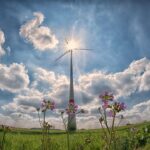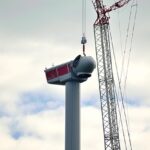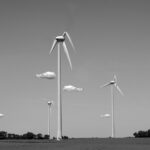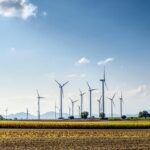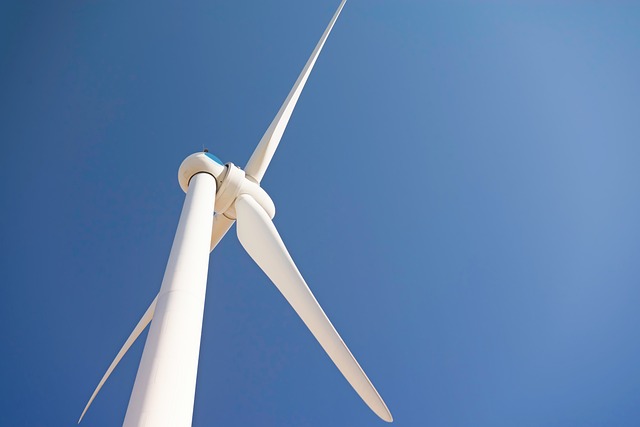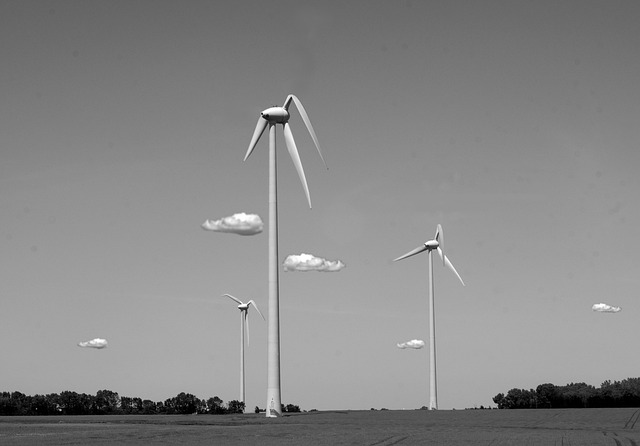Wind Power and Economic Growth: A New Era of Job Creation
As the global economy struggles to recover from the repercussions of the COVID-19 pandemic and faces the urgent need to combat climate change, the renewable energy sector, particularly wind power, emerges as a beacon of hope. Wind energy has grown remarkably in recent years, and its potential extends beyond environmental benefits; it plays a crucial role in economic growth and job creation. This article delves into the expansive world of wind power, examining its contributions to economic advancement, the types of jobs it generates, and the ripple effects throughout communities and industries.
The Rise of Wind Power
Wind power has transitioned from an experimental technology to a cornerstone of the global energy landscape. The International Energy Agency has reported exponential growth in wind energy installations worldwide. From the early days of small wind turbines to vast wind farms that dot landscapes, the evolution of wind power mirrors technological advancements and growing public awareness of the need for clean energy sources.
Countries like the United States, Germany, and China are leading the charge, investing heavily in wind energy infrastructure. According to the Global Wind Energy Council, global wind capacity reached over 700 gigawatts by the end of 2020, positioning wind as a viable alternative to fossil fuels. The shift towards wind power reflects an urgent need to address climate change while fostering sustainable development.
Economic Impact of Wind Energy
Wind energy does not merely provide an alternative to traditional energy sources; it also acts as an economic driver. The economic impact of the wind energy sector is multi-faceted, influencing everything from local economies to global markets.
Direct Investment and Infrastructure Development
One of the most immediate economic impacts of wind power is direct investment. The construction of wind farms necessitates significant capital, fostering investment in infrastructure that creates short-term jobs during the construction phase. These projects often stimulate local economies, as construction workers, engineers, and technicians are hired to bring these installations to life.
Long-Term Job Creation
Beyond the initial investment, the wind power sector offers long-term employment opportunities. Once operational, wind farms require maintenance, operation, and administrative support. As a result, the wind energy industry creates jobs in various fields, including:
- Engineering and technical roles focused on turbine design and efficiency
- Construction and installation jobs that involve building and setting up turbines
- Operations and maintenance positions that ensure wind farms function efficiently
- Project management and logistics roles focused on scheduling, budgeting, and procurement
- Research and development jobs aimed at innovation within the sector
According to the U.S. Department of Energy, the wind sector employed over 116,000 Americans in 2019 alone, with projections for robust growth as more countries embrace renewable energy solutions to meet their climate goals.
Community Revitalization Through Wind Power
The positive impacts of wind energy extend to local communities, often revitalizing areas that were previously dependent on declining industries. As traditional manufacturing jobs decrease in many sectors, the wind industry offers new employment avenues, mitigating economic decline and fostering community resilience.
Local Economic Benefits
In addition to job creation, wind farms can significantly enhance local economies through taxes and community support. Wind projects often provide substantial property tax revenues to local governments, which can be invested in public services such as schools, roads, and emergency services. These economic benefits incentivize communities to support the development of wind energy, recognizing the advantages of long-term financial stability.
Enhancing Energy Independence
Wind power also contributes to energy independence, reducing reliance on imported fossil fuels. Countries that invest in wind energy can stabilize their energy supplies and insulate themselves from fluctuating fuel prices. This aspect of wind energy not only promotes economic security but also leads to a more sustainable energy future, fostering growth through energy stability and resilience.
Challenges and Opportunities
Despite the myriad benefits, the wind power industry faces challenges that need to be addressed to ensure sustained growth. Issues such as public opposition, regulatory hurdles, and technological constraints can hinder the development of new wind projects. However, these challenges also present opportunities for innovation and improvement.
Technological Advancements
One area ripe for innovation is the development of more efficient and powerful wind turbines. Advancements in turbine design and materials science can lead to increased energy output and efficiency, further driving down the costs associated with wind power. Emerging technologies like offshore wind farms represent an exciting frontier, substantially increasing capacity while harnessing wind potential over oceans, far from populated areas.
Policy and Regulatory Frameworks
The role of government plays a significant part in the future of wind power. Clear and supportive policies are essential for the continued growth of the industry. Initiatives such as tax incentives, renewable energy targets, and funding for research and development can spur investments and foster innovation. Policymakers must prioritize sustainable energy solutions to propel economic growth and job creation in the renewable energy sector.
Future Prospects of Wind Power and Job Growth
Looking ahead, the wind power sector is well-positioned to continue its role as a driver of economic growth and job creation. Projections indicate that renewable energy jobs could reach 24 million globally by 2030, with offshore wind alone accounting for a significant portion of that growth. The urgency of addressing climate change mandates a robust transition to renewable energy sources, further accelerating the demand for skilled labor in the sector.
Education and Training Initiatives
To meet the industry’s growing needs, educational and training programs will be vital. Technical schools and universities must partner with the wind power sector to develop curriculums that equip students with the necessary skills. Programs focusing on the engineering, environmental science, and business aspects of renewable energy will prepare the workforce for the changing landscape. Additionally, retraining initiatives should be available for workers transitioning from declining industries, ensuring a smooth shift into renewable energy roles.
Conclusion
Wind power is not just about generating electricity; it represents an entire ecosystem of economic growth and job creation. As countries strive to achieve sustainability and confront climate change, investing in wind energy has never been more crucial. The benefits of wind power reverberate through communities, economies, and industries, creating a future where clean energy coexists with evolving job markets. With continued support, innovation, and commitment from governments, businesses, and individuals, wind power can usher in a new era of economic prosperity, sustainability, and resilience for generations to come.
